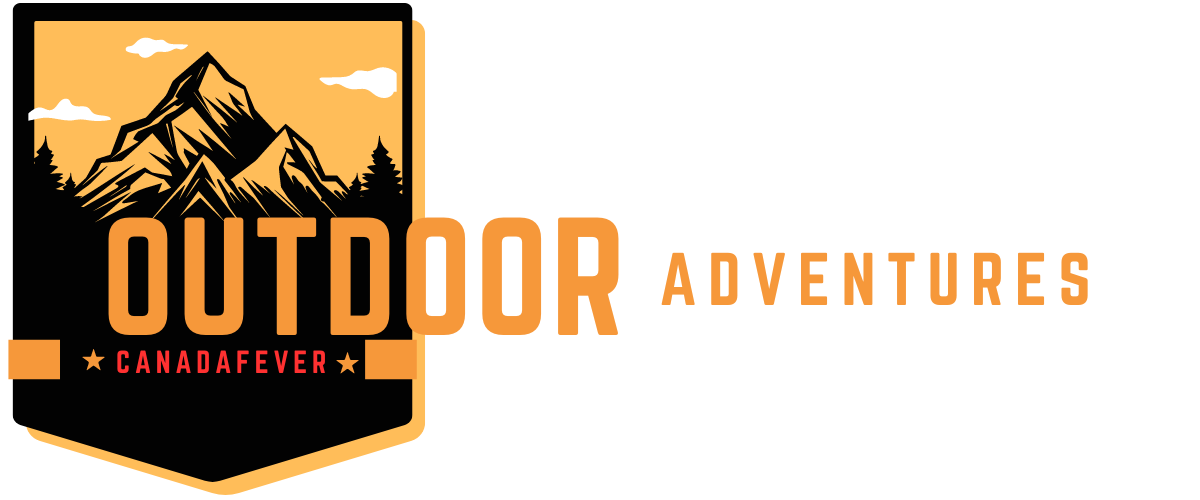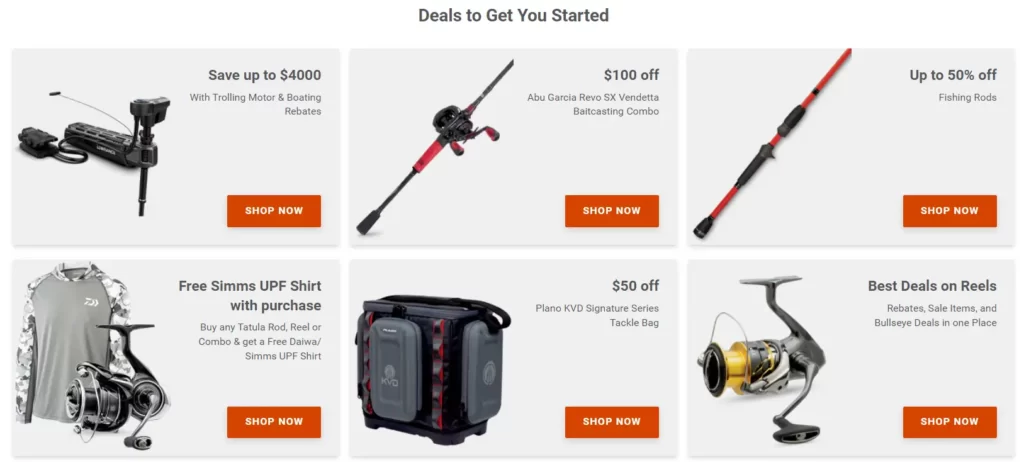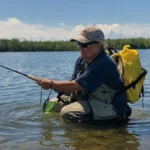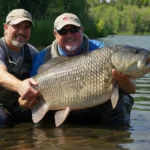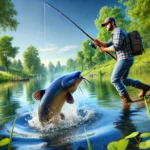Explore Canada's Ultimate Fishing, Hunting, and Wildlife Adventures
Professional Guide to Fishing on Lake – Top Tips and Strategies

Key Takeaways
1. Fishing on lake requires the right tools and knowledge to maximize catch rate.
2. Tips for finding the best fishing spots include looking for drop-offs, checking water temperature, and paying attention to underwater structure.
3. Different fishing techniques like casting, trolling, and jigging can increase catch rate.
4. Understanding lake fishing seasons is important as fish behavior and feeding patterns change throughout the year.
5. Obtaining fishing permits and adhering to regulations is crucial to protect the lake’s ecosystem and avoid legal issues.
6. Hiring a guide can provide local knowledge, expertise, and access to prime fishing spots.
Welcome to our professional guide to fishing on a lake, where we provide you with the top tips and strategies for a successful fishing trip.
Fishing on a lake can be a thrilling experience for anglers of all levels, but it’s important to have the right tools and knowledge to maximize your catch rate.
In this guide, we’ll cover everything from identifying the best fishing spots on the lake to the different techniques and equipment you need for a successful trip.
We’ll also navigate through the different seasons and how they affect fishing on the lake, the importance of obtaining permits and adhering to regulations, and tips for catching different species of fish.
Additionally, we’ll provide essential safety precautions and answer frequently asked questions about fishing on a lake.
Whether you’re a seasoned angler or a beginner, this guide will help you make the most out of your lake fishing experience.
So grab your gear, hop on a boat, and let’s dive into the exciting world of fishing on a lake.
Table of Contents
Finding the Best Fishing Spots on the Lake
Knowing where to fish on a lake can significantly increase your chances of a successful catch. Factors such as water temperature, structure, and underwater topography can all indicate where fish are likely to gather.
Here are some tips on how to find the best fishing spots on a lake:
| Tip | Explanation |
|---|---|
| Look for drop-offs | Fish often gather where the water suddenly gets deeper. This can be the edge of a submerged river channel, a creek bed, or a sudden drop-off in the lake bottom. |
| Check water temperature | Fish tend to move to deeper, cooler water during hot summer days. Conversely, they may move to shallower, warmer water during colder months. |
| Pay attention to structure | Areas with underwater structure such as fallen trees, rocks, or weed beds can provide shelter and food for fish. |
| Use a fish finder | A fish finder can help identify where fish are congregating, and what depths they are swimming at. |
Disclosure: When you purchase a service or a product through our links, we sometimes earn a commission, at no extra cost to you.
Remember that fishing spots can vary depending on the time of day, season, and weather conditions. Experiment with different locations and techniques to find what works best for you.
Understanding Lake Fishing Techniques
Successful lake fishing requires a good understanding of different fishing techniques. Whether you’re casting from the shore or out on a boat, here are some techniques you can use to increase your catch rate:
Fly to Your Canadian Fishing Paradise
Book cheap flights to Canada's best fishing spots!
One search, all flights
Find the best deals to your favorite fishing spots
Kiwi.com Guarantee
Travel worry-free with our protection
Trusted by millions
Join anglers booking cheap flights with ease
Disclosure: When you purchase a service or a product through our links, we sometimes earn a commission, at no extra cost to you.
Casting
Casting involves throwing a line with a lure or bait out into the water and retrieving it in. This can be done from the shore, dock, or a boat. To cast effectively, practice your technique to ensure your line lands where you want it to. Consider factors like wind direction, depth, and structure when casting, as these can affect where fish may be located.
Trolling
Trolling is a fishing technique that involves dragging lures or baits behind a boat. This is particularly effective for targeting species that are on the move, like trout or walleye. To increase your chances of success, vary your speed and depth and experiment with different lures until you find what works best.
Jigging
Jigging involves dropping a weighted lure or jig to the bottom of the lake and then pulling it up and down to mimic the movement of prey. This technique is often used to target species like bass, walleye, and pike. Experiment with different jig weights and colors until you find what works best for the species you’re targeting.
Live Bait and Artificial Lures
Both live bait and artificial lures can be effective for freshwater lake fishing. Live bait like worms or minnows can be especially effective for species like bass and panfish. Artificial lures like spinners, crankbaits, and soft plastics can also be effective, but it’s important to match the lure to the type of fish you’re targeting.
Essential Fishing Equipment
To ensure a successful lake fishing trip, it’s important to have the right equipment. In addition to your fishing rod and reel, consider bringing a tackle box with a variety of tackle options. It’s also a good idea to bring a landing net, pliers, and a fish scaler to help you handle your catch.
Navigating Lake Fishing Seasons
Understanding the different seasons and how they affect fishing on a lake is crucial for any angler looking to maximize their catch rate. Fish behavior, water temperature, and feeding patterns all change throughout the year, making it essential to adjust your approach accordingly.
Fall
As temperatures begin to cool, many fish species will start feeding aggressively in preparation for winter. This makes fall a great time for catching larger fish. Look for areas with structure, such as drop-offs or weed beds, and use live bait or lures that mimic the prey that fish are feeding on.
Winter
Cold water temperatures slow down fish metabolism, making them less active and harder to catch. However, some species, such as walleye and trout, are more active during the winter months. Look for areas with deep waters, where fish are likely to migrate for warmer water temperatures. Experiment with different baits and lures until you find what works best.
Spring
Spring is a great time for fishing on a lake as many fish species begin to spawn and become more active. As the water temperature warms up, fish start moving towards shallower water areas to feed and prepare for spawning. Look for areas with cover, such as rocks, logs, or weed beds, where fish are likely to congregate. Try using lures that mimic prey or live bait to attract bites.
Summer
Summer temperatures can make fishing more challenging as fish become more sluggish and feed less frequently. Look for areas with cooler waters, such as shaded areas or deeper waters. Early morning or late evening are often the best times to fish during the summer months. Experiment with different fishing techniques and lures until you find what works best for you.
Obtaining Lake Fishing Permits and Understanding Regulations
Before you head out for a day on the lake, it’s essential to obtain the necessary permits and understand the regulations for fishing in the area. Each lake may have different rules and regulations, so it’s vital to do your research beforehand to avoid any legal issues or environmental damage.
Where to Obtain Lake Fishing Permits
In most cases, you can obtain a fishing permit for a particular lake from the local government agency responsible for managing the lake. The specific agency may vary depending on the location, so it’s best to check with the local authorities to find out where to go.
In addition to the government agencies, some private companies offer fishing permit services. These companies may have permits available for multiple lakes in the area, making it more convenient for anglers who plan to fish in different locations.
Understanding Lake Fishing Regulations
One of the most critical aspects of obtaining a fishing permit for a lake is understanding the regulations that come with it. The regulations can vary depending on the location, as well as the time of year and species of fish you plan to catch.
Examples of common fishing regulations for lakes include designated fishing areas, catch limits, and specific times of year when fishing is prohibited. Some lakes may also have restrictions on the type of fishing gear and bait that can be used.
Why Adhering to Regulations is Important
Fishing regulations are put in place to protect the lake’s ecosystem and ensure the sustainability of fish populations. By adhering to these regulations, anglers can help ensure that the lake remains a healthy environment for the fish and other organisms that call it home.
It’s also essential to note that violating fishing regulations can result in fines or legal repercussions, potentially ruining your fishing trip and damaging the lake’s ecosystem. So, before you cast your line, take the time to understand the fishing regulations in the area and make sure you have the necessary permits to avoid any issues.
Hiring Guided Fishing Tours on the Lake
One great way to enhance your lake fishing experience is to hire a professional fishing guide or join a guided fishing tour. These services offer local knowledge, expertise, and access to prime fishing spots that you may not have been able to find on your own. Here are some reasons why hiring a guide can be beneficial:
| Benefits | Explanation |
|---|---|
| Local Knowledge | A guide knows the lake like the back of their hand and can take you to the spots where certain species of fish are more likely to be found. |
| Expertise | A guide can provide tips and tricks to improve your fishing techniques and help you catch more fish. They can also provide advice on which bait and lures to use. |
| Equipment | Guided fishing tours often provide the necessary equipment, including fishing gear, bait, and life jackets, so you don’t have to worry about bringing your own. |
| Safety | A guide can ensure that you stay safe on the water, by keeping an eye on changing weather conditions, potential hazards, and ensuring that you have the appropriate safety equipment. |
Hiring a guided fishing tour can also be a great way to learn new techniques and meet other anglers who share your passion for fishing. The experience can be a great way to create lasting memories and improve your skills as a fisherman.
Tips for Catching Different Species of Fish on the Lake
Catching fish on a lake can be a challenging task. Different species of fish require different techniques and strategies to increase your chances of success. Here are some tips for catching some of the most commonly found species of fish on a lake.
Bass
Bass fishing is one of the most popular types of lake fishing. Use plastic worms or jigs to attract largemouth bass, and crankbaits or spinnerbaits for smallermouth bass. Look for areas with structure and cover, such as weed beds or fallen trees, where bass like to feed and hide.
Trout
Trout are typically found in cold, clear waters and can be caught on live bait, such as worms or minnows, or artificial lures, including spinners, jigs, and spoons. Fish in areas with submerged rocks, logs, or other structures, as trout like to hide and ambush their prey.
Walleye
Walleye are often found in deeper waters and can be attracted with live bait, such as leeches or minnows, or artificial lures, such as jigs or spinners. Look for areas with drop-offs, changes in depth, or underwater ledges where walleye like to feed.
Panfish
Panfish, including bluegill and crappie, are typically found in shallow waters near vegetation or structure. Use small jigs or live bait, such as worms or crickets, to catch panfish. Look for areas with weed beds or submerged logs where panfish like to feed and hide.
Catfish
Catfish are bottom-feeders and are often found near underwater structures, such as logs or rocks. Use live bait, such as worms or minnows, or stink baits to attract catfish. Fishing at night can also increase your chances of catching catfish.
Essential Safety Precautions for Lake Fishing
While fishing on a lake can be an enjoyable and relaxing experience, it is important to take certain safety precautions to ensure that your fishing trip is a success.
Here are some essential safety tips to keep in mind when fishing on a lake:
Wear a Life Jacket
When fishing on a lake, it is crucial to wear a life jacket. Even if you consider yourself to be a strong swimmer, unexpected accidents can happen on the water. A life jacket can provide additional support and keep you safe in case of an emergency.
Check Weather Conditions
Prior to embarking on your fishing trip, be sure to check the weather conditions for the day. If the weather is forecasted to be particularly windy or stormy, you may want to reconsider your fishing plans or reschedule for another day. In addition, if you are caught in unexpected weather while on the water, be sure to move to a safe location and wait out the storm.
Be Mindful of Hazards
When fishing on a lake, it is important to be aware of any potential hazards on the water. This can include floating debris, underwater hazards, or other watercraft in the area. Be sure to keep a safe distance from any potential hazards and stay vigilant while on the water.
Stay Alert
Most importantly, when fishing on a lake, it is essential to stay alert and focused. Be aware of your surroundings and the behavior of other anglers or boaters in the area. If you notice any suspicious activity or potential danger, be sure to report it to the authorities immediately.
By following these safety precautions, you can ensure that your lake fishing trip is a fun and memorable experience while remaining safe and avoiding potential accidents.
FAQ about Fishing on Lake
Q: Do I need a fishing license to fish on a lake?
A: Yes, in most cases, you need a fishing license to fish on a lake. Fishing regulations and licensing requirements vary by location, so it’s important to check with the local authorities or government agencies responsible for managing the lake to obtain the necessary permits.
Q: What is the best time of day to fish on a lake?
A: The best time of day to fish on a lake can vary depending on various factors, including the species of fish you’re targeting and the time of year. Generally, early morning and late evening tend to be productive periods when fish are more active. However, it’s worth experimenting with different times of day to see what works best for you.
Q: What type of equipment do I need for lake fishing?
A: Essential fishing equipment for lake fishing includes a fishing rod and reel, a tackle box with a variety of tackle options, a landing net, pliers, and a fish scaler. The specific equipment you need may vary depending on the fishing techniques you plan to use and the species of fish you’re targeting.
Q: How can I find the best fishing spots on a lake?
A: Finding the best fishing spots on a lake involves considering factors such as water temperature, underwater structure, and drop-offs. Look for areas where fish are likely to gather, such as submerged river channels, creek beds, and areas with fallen trees or weed beds. Using a fish finder can also help identify fish congregating areas.
Q: What are some popular fishing techniques for lake fishing?
A: Popular fishing techniques for lake fishing include casting, trolling, jigging, and using live bait or artificial lures. Casting involves throwing a line with a lure or bait and retrieving it. Trolling is dragging lures or baits behind a boat. Jigging involves dropping a weighted lure and mimicking prey movement. Experiment with different techniques to find what works best for you and the species you’re targeting.
Q: How do I ensure my safety while fishing on a lake?
A: To ensure your safety while fishing on a lake, always wear a life jacket, check weather conditions before heading out, be mindful of hazards in the water, and stay alert. Additionally, it’s important to follow fishing regulations and guidelines, and report any suspicious activity or potential danger to the authorities.
Resources and External Links
Here are some additional resources and external links that can help you learn more about “Fishing on Lake”:
Articles
- Lake Fishing Tips & Techniques
- How To: Determine Where to Fish on a Lake (Step-by-Step)
- Fly Fishing on Lakes: A Guide to Lake Fishing
These resources provide additional information and insights about “Fishing on Lake”.
